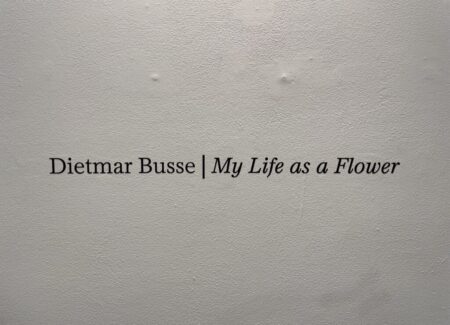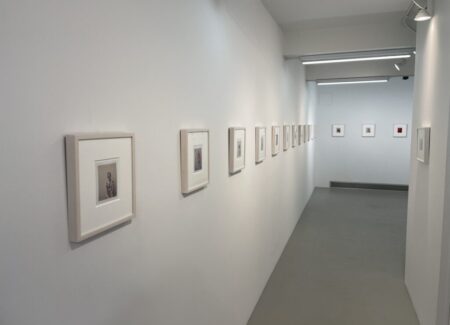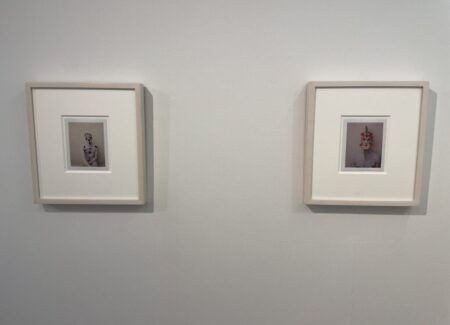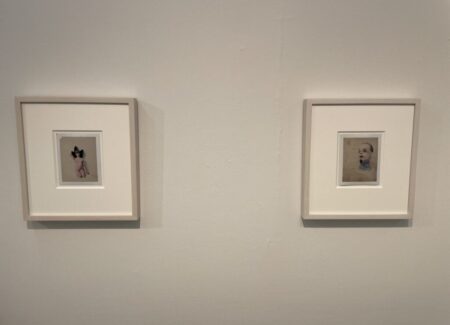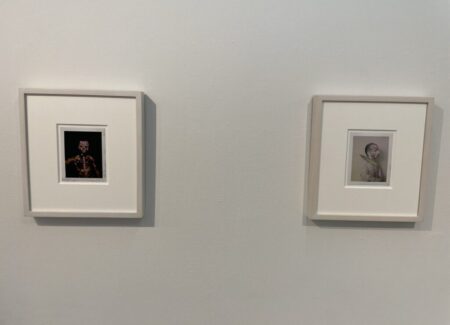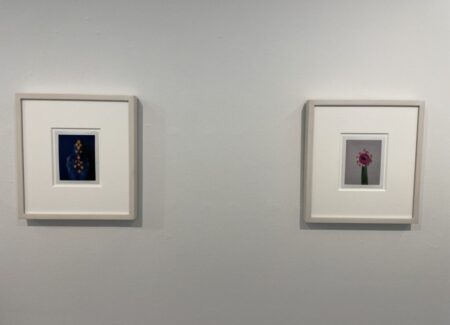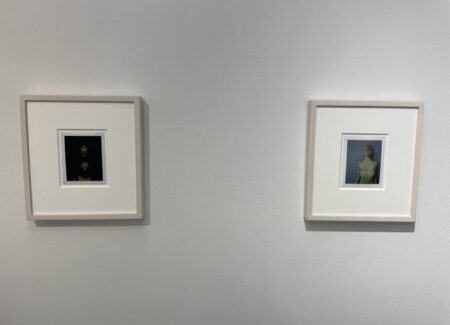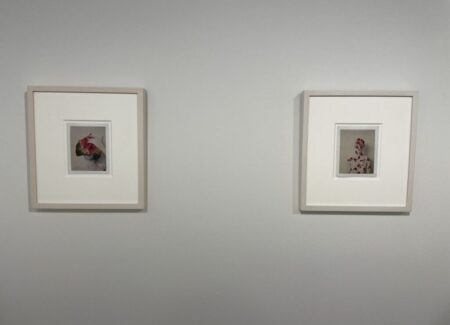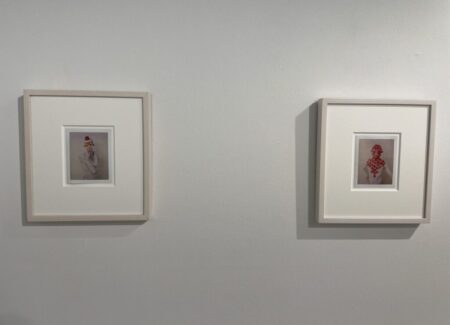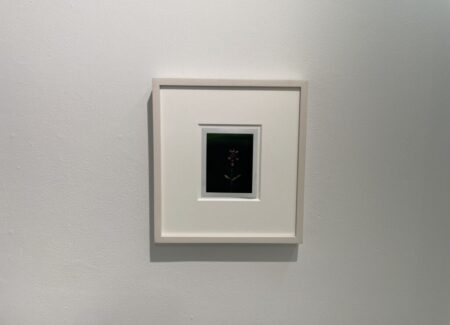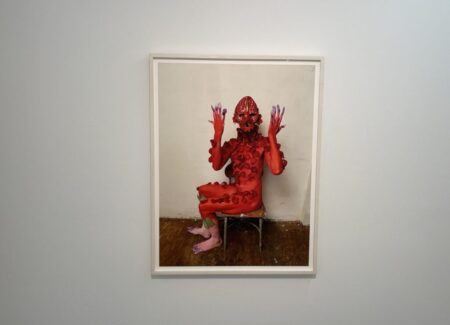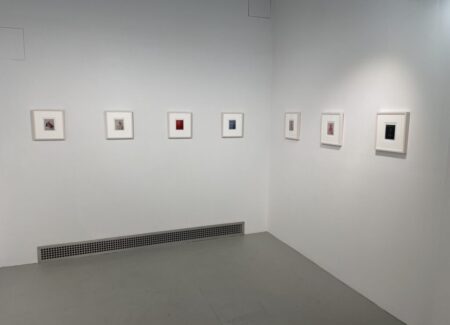JTF (just the facts): A total of 21 color photographs, generally framed in light wood and matted, and hung against white walls in the back gallery space. Twenty of the works on view are unique Polaroid prints, made in 2001 or 2002 and each sized 5×4 inches. The other work is an archival pigment print, made in 2025, sized roughly 31×24 inches, and available in an edition of 5+2AP. (Installation shots below.)
Comments/Context: Across the long history of photographic self-portraiture, artists have seen and re-imagined themselves in a dizzying variety of ways. They have “played” themselves, taken on roles, worn elaborate wigs, makeup, and costumes, explored gender, racial, and sexual stereotypes, staged themselves in meticulously arranged scenes, watched themselves age, and isolated their bodies into abstractions, among many other conceptual and aesthetic strategies for examining the subtle facets of personal identity.
Even with all of this experimentation as a backdrop, Dietmar Busse’s self-portraits find a way to push into unexpectedly unique territory. As seen in this succinct show of the German-born artist’s Polaroids made in the early 2000s, Busse has used his own nude body as his baseline subject, transforming himself into a series of surreal human/flower hybrids. His approach involved covering his body with paint and other pigments and then adding different kinds of blossoms, petals, leaves, and other natural elements, each made-to-be-photographed iteration documenting an ephemeral floral persona.
The series is consistently engaging as both a bounded artistic problem solving exercise and as a sensitive extension of possible performative selves. Busse has made the most from a limited set of variables: body paint color (generally white, blue, red, or black, often matched by backdrop color, to create an enveloping studio set) and scavenged floral specimens. His results play with textural ideas of decoration and pattern, sculptural changes to the typical shape of his body (via extending leaves and blossoms), and the more conceptual identity-shaping possibilities of camouflage and body modification.
The individual works are filled with small surprises and associations: a single blossom as a mouth replacement; petals arranged like fish scales or bird feathers; large leaves like flapping wings; and petals that are meticulously placed to trace the edges of foreheads, cheekbones, eyes, ears, and shoulders. Each of these strategies rebalances our assumptions about what human body looks like, taking Busse’s slicked-back androgyny as a starting point for various flights of fancy. Some of his aesthetic choices feel like boldly deliberate alterations (or provocations), while others seem more evolutionary, like mutations that have started to overtake his humanity (like Natalie Portman’s emergent feathers in the film “Black Swan”).
While Busse often uses white as his primary color, essentially erasing himself and making his intricate floral decorations more prominent (this is also true of his all black settings, where eyes peer out from the darkness), many of his more deeply colored setups pop with seductively bold energy, particularly the blue arrangements with orange or red petals. When we return to the more muted white world, Busse’s essential fragility comes out more strongly, with delicate petals accenting poses that often feel quiet and introspective.
What I appreciate about these many self-portraits is their willingness to be eccentric, weird, and vulnerable – the resulting parade of pictures feels freeing, like an artist digging into himself without worrying about the strangeness and fragility that might be discovered there. Along the way, Busse changes the tactile nature of flesh and re-imagines petals as extended toenails and sharp leaves as elongated beards. In thinking of himself as different kinds of fantastically impossible flowers, his self-portraits might even be unexpectedly aspirational, a visual wish to present an alternate kind of beauty to the world.
Collector’s POV: The Polaroids in this show are priced at $6000 each, while the archival pigment print is priced at $4500. Busse’s work has little secondary market history at this point, so gallery retail likely remains the best option for those collectors interested in following up.
